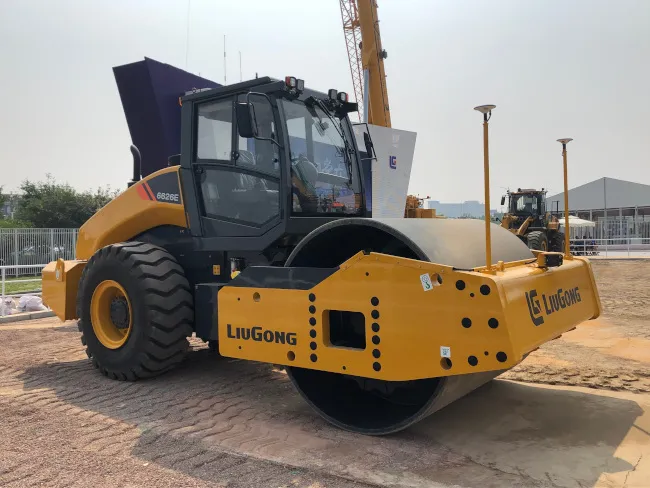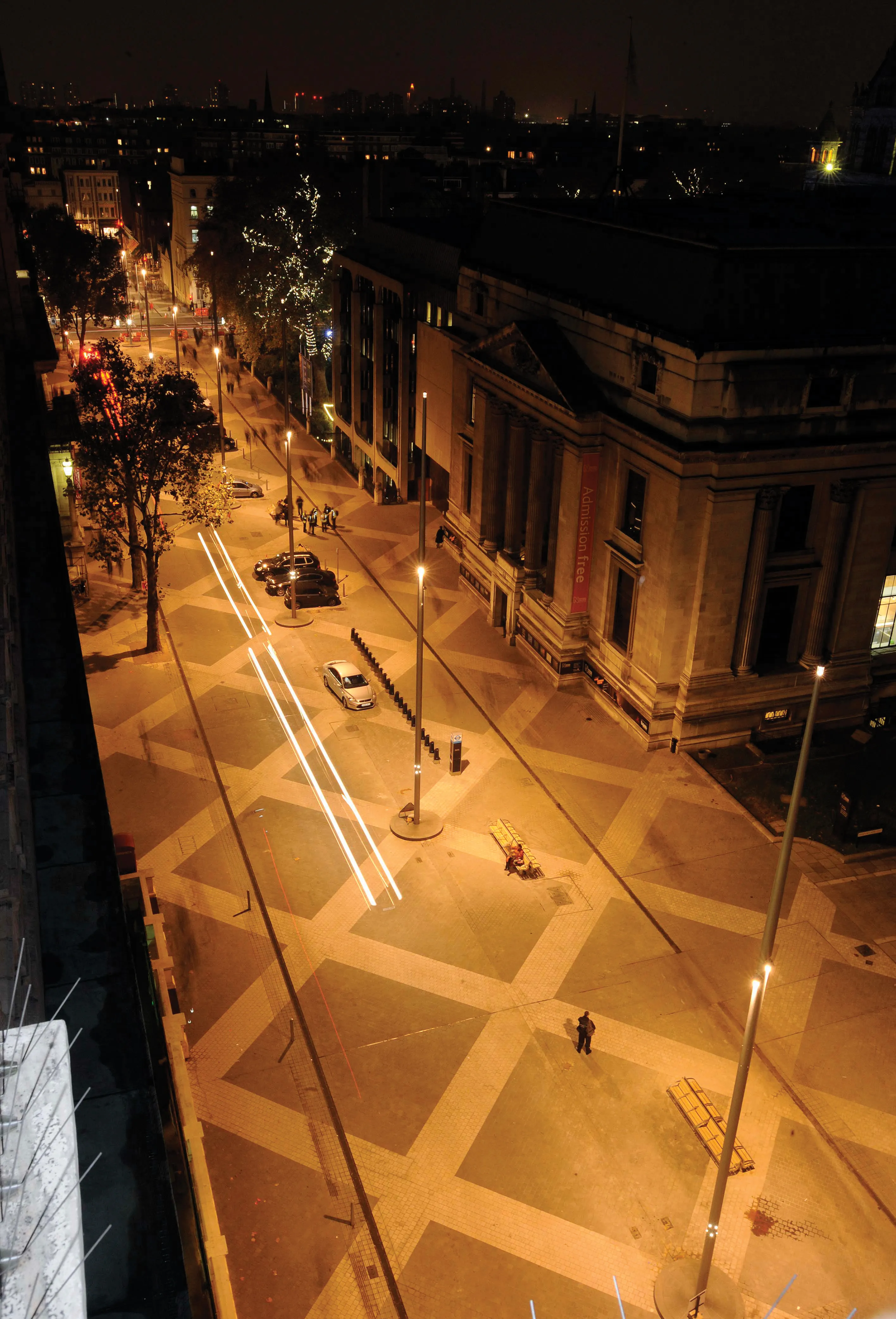
The firm unveiled its prototype system at the recent
However, the prototype is equipped with the latest high -accuracy GPS positioning technology as well as a sensor array to detect obstacles. This package means that the machine can be controlled from remotely (up to thousands of kilometres away), without the need for a human operator sitting in the cab.
The firm says that the sensors and accurate GPS package allow the machine to work accurately and reliably without exposing the operator to noise and vibration as well as extremes of heat or cold on the jobsite, boosting working quality and productivity.
Power for the prototype comes from a Schanghai diesel delivering 177kW and which meets the China Stage III emissions requirements. The drum has a diameter of 1.7m and a width of 2.2m. This delivers amplitudes of 2.1mm or 1.1mm, centrifugal forces of 480kN or 375kN and at frequencies of 28Hz or 33Hz respectively.
At this stage the machine is in development and LiuGong has not set a date for commercial availability, explaining that
testing is still underway. LiuGong says it will complete its extensive testing and development programme in China before releasing the package for sale on the global market. Suitable engines will be installed to meet local market emissions requirements at that time.








